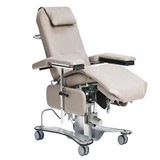Lean Management involves never-ending efforts to eliminate or reduce 'waste' while Six Sigma is a disciplined, data-driven method for eliminating defects in any process. These methods were developed in manufacturing contexts. The two methods can be combined and referred to as Lean Six Sigma (LSS).
High bed occupancy levels and increases in in-patient numbers are huge contributors to increased work and stress in public hospitals.
A new study from an inter-university team of Melbourne researchers investigated the application of LSS in a large hospital to see if it could reduce the time taken to assess and stabilise patients in the emergency department (ED).
The team also looked to see if it assisted in increasing the flow of patients through the hospital – from their admission and transit through various units, to their discharge into the community without increasing the workload of staff.
The researchers found balancing such conflicting flows was important to ensuring the smooth running of an ED; to limit the amount of time patients are waiting for a bed; and to reduce work and stress levels.
Challenging to introduce, but ultimately rewarding
Monash University's Professor Greg Bamber said LSS had originally been developed to improve the productivity and efficiency of the automobile and manufacturing industries.
"In recent years hospitals have been trying to adapt LSS processes to streamline processes and improve costs," he said.
"There have been earlier claims about work intensification experienced by employees in lean manufacturing. Therefore, we studied the outcomes after transferring LSS concepts into a hospital context, to streamline processes and improve costs there."
The project found introducing LSS in hospitals was more challenging than in manufacturing, but it could help to improve patient flow from the emergency department to hospital beds.
Implementation also allowed the hospital studied to open more beds as well as install new software for monitoring bed availability. At the ward level opening more rehabilitation beds – improving the discharge process – enhanced patient flow.
Professor Pauline Stanton from RMIT cautioned to be successful with innovations such as LSS, hospitals needed to have sufficient resources and an excellent implementation process – a process that takes the time to involve the key stakeholders, including the front-line staff.






-160x160-state_article-rel-cat.png)





-160x160-state_article-rel-cat.png)






